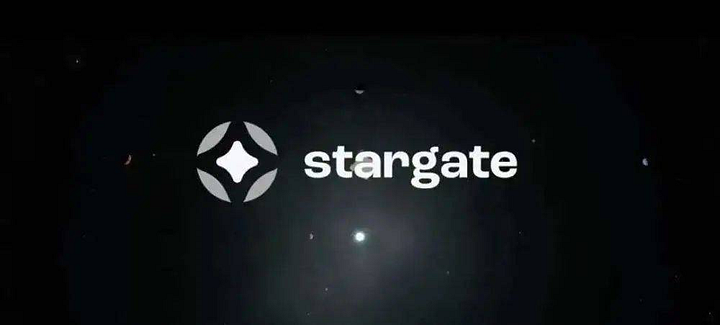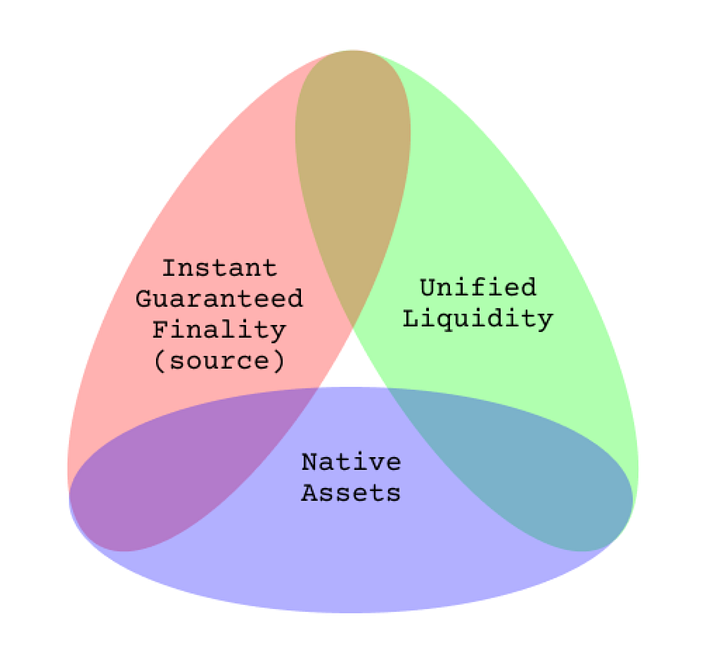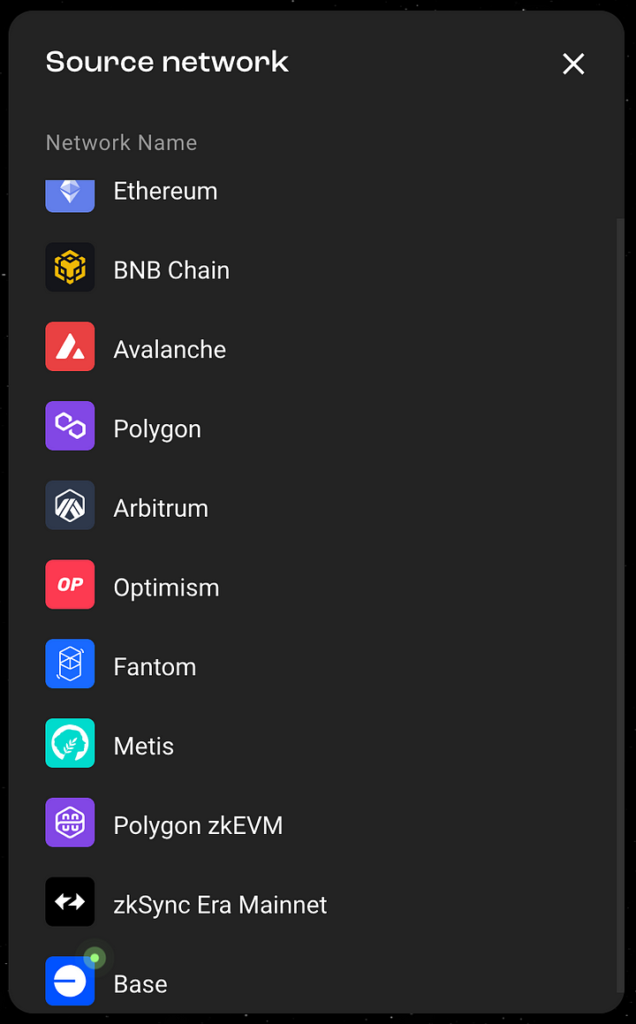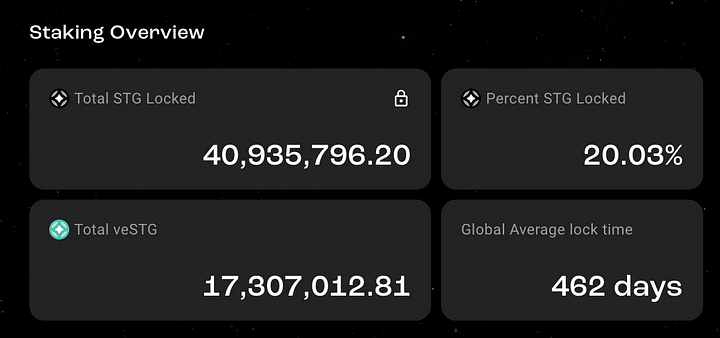1. Background
First of all, with the continuous development of the blockchain industry, various forms of chains have emerged, such as Layer1, Layer2, Layer3, side chains, Rollups, etc. There are isomorphic chains and heterogeneous chains. Moreover, each blockchain , and is divided into many different protocols.
These different blockchains and different protocols split the blockchain world into information islands. A large number of encrypted assets are distributed on these different chains and different protocols, which undoubtedly reduces the utilization of funds. efficiency.
The emergence of cross-chain bridges can build bridges between these different chains, and bridge assets on one chain to other blockchains.
For example, the appearance of the two-layer network Base cross-chain bridge launched by Coinbase can bridge encrypted assets on other chains to the Base network, and users can enjoy some early dividends of the Base chain. At the same time, through cross-chain Bridges can also bridge assets on the Base chain to other blockchains.
It can be said that the emergence of cross-chain bridges has greatly improved the efficiency of capital utilization.
Further reading: Coinbase Public Chain "Base Ecological Explosion Growth, Two Steps to Teach You to Cross-Chain Assets

According to the statistics of defillama, in the current DeFi pattern, the total TVL of cross-chain bridges ranks fourth, reaching a volume of 9.7 billion US dollars, second only to the Dex track.
However, in the cross-chain bridge track, there are generally problems such as low security, high cost, and slow cross-chain speed. It is against this backdrop that Stargate emerged.
2. Overview of the Stargate Protocol

Stargate Finance is a multi-chain cross-chain bridge protocol based on LayerZero. It was established by LayerZero Labs in March 2022. It is also the first DApp based on the LayerZero protocol. It is a kind of asset transfer between multiple blockchains. agreement.
The goal of Stargate is to simplify the process of transferring assets from one blockchain to another, eliminating the cumbersome steps of locking, minting, burning, and redeeming, to achieve the convenience of completing the transfer in one transaction.
Since Stargate is a cross-chain protocol built on LayerZero, when it comes to Stargate, we need to start with LayerZero.
What is Layer Zero
LayerZero is an Omnichain interoperability protocol . LayerZero has built a new ultra-light node model to provide a safe and reliable infrastructure for various cross-chain protocols.

Theoretically speaking, LayerZero can transmit messages on any chain that supports smart contracts. For example, if a user sends a piece of information on chain A, then the information can be transmitted to chain B, so that the smart contract of chain B can implement the corresponding operation. LayerZero can realize information communication between different chains. The information communication here also includes asset transfer between different chains.
LayerZero is not a public chain or an application ecosystem, but a lower-level protocol . The positioning of LayerZero is similar to the TCP protocol at the transport layer in the Internet. Many different DApps can be built on top of this protocol.
How LayerZero achieves full-chain interoperability
We first understand the difference between full nodes, light nodes and ultra-light nodes .
- Full node : A node that synchronizes all blockchain data, storing both block headers and specific transaction information.
- Light nodes: only store a small part of the blockchain data, such as block headers and other information, and do not store specific transaction information in the block.
- Ultra-light nodes : Instead of keeping all block headers, streaming block headers are transmitted on-demand through the oracle machine , so that entities outside the chain can be synchronized more efficiently to achieve the desired state.
Layerzero's full-chain interoperability is achieved by deploying an Endpoint (client) on each chain. The Endpoint will execute an ultra-light node (ULN, Ultra light node), and then use the Oracle (oracle machine) to Transmit block headers containing cross-chain information (instead of transmitting all block headers in order to reduce costs), and then transmit transaction proofs (Proof information) through Relayers (relays), and the two verify each other to ensure cross-chain The information is correct.
The figure below shows the flow of the user application (UA, User Application) on Chain A sending messages to the user application on Chain B through LayerZero.

LayerZero's full-chain interoperability is accomplished through the joint action of these three core components Endpoint, Oracle and Relayer .
Based on LayerZero, the full-chain interoperability can run through many businesses that were not easy to achieve in the past, such as full-chain cross-chain bridges, cross-chain transactions, cross-chain lending, etc., and Stargate is the official cross-chain bridge launched by LayerZero, which is also based on LayerZero The first DApp of the protocol is called by the LayerZero team as the first product to solve the "bridge trilemma" .
3. How does Stargate achieve cross-chain
As we all know, there is an "Blockchain Trilemma" theory in the public chain, which refers to the degree of decentralization, security, and scalability . A public chain can only satisfy two of them at the same time.
For example, for Bitcoin, its degree of decentralization and security are relatively high, but its scalability is poor. For many public chains, although scalability and security have been improved, it has sacrificed decentralization.
The "Blockchain Trilemma" dilemma in the field of public chains can be solved through modular public chains.
Similarly, there is also an "Blockchain Trilemma" theory in the cross-chain field, which are:
- Instant Guaranteed Finality
- Unified Liquidity
- Native Assets)

However, the Stargate cross-chain bridge built on the LayerZero protocol can satisfy these three characteristics of the cross-chain bridge at the same time, that is, it can guarantee instant finality, realize unified liquidity, and support native assets.
In some common cross-chain bridges, most of them use the "lock + mint + destroy" method, that is to say, the assets are locked in the source chain first, and the synthetic assets are minted in the target chain, and the assets need to be transferred to When returning to the source chain, it is necessary to destroy the previously minted synthetic assets and then redeem the original tokens, which does not actually achieve instant finality.
Stargate has developed a new resource balancing algorithm that unifies native liquidity across all blockchains while providing instant guaranteed finality.
Stargate adopts a "liquidity swap" solution for cross-chain assets. Unlike most cross-chain bridges that set up independent liquidity pools for specific networks, Stargate uses a unified liquidity pool to support asset cross-chain operations.
In other words, Stargate can realize unified liquidity pool management , and each chain can also access the liquidity on other chains.
For example, if there is a USDT liquidity pool on chain A, then USDT-related transactions initiated by other chains can borrow and return the USDT liquidity of chain A, so that the algorithm can maintain liquidity in the face of unbalanced transaction volume Sexual balance, so that the efficiency of capital utilization can be improved.
However, when multiple chains share a liquidity pool, they will face the problem of transaction failure due to insufficient liquidity depth, because when multiple chains share a liquidity pool, the number of users and the number of parallel users will increase accordingly, thus Reduced the liquidity in the pool, causing some cross-chain transactions to fail.
For example, chain A has 100 USDT liquidity, chain B requests 60 USDT liquidity, and chain C requests 50 USDT liquidity, the sum of USDT liquidity of chain B and chain C exceeds the sum of USDT liquidity of chain A , then the cross-chain request of one of the chains will fail.
To this end, Stargate introduced a set of "resource balancing algorithm" to solve the above problems. Stargate divides the liquidity pool on each chain into multiple intervals for management according to different blockchains, also called soft split slots.
For example, 100 USDT on chain A is softly divided into 50 USDT on chain B and 50 USDT on chain C.
In order to make the flow efficiency more likely to meet cross-chain needs, the protocol allows "borrowing" and "returning" liquidity between different chains, so that the algorithm can maintain a balance of liquidity in the face of unbalanced transaction volume.
When a cross-chain request is received, the resource balance algorithm will review the liquidity of each interval and allocate the assets deposited by the user to the intervals with insufficient liquidity to supplement, thereby avoiding transaction failures caused by liquidity exhaustion.
If the cross-chain consultation on the B chain is more frequent, then it can be set to a higher weight. When new liquidity comes in, in addition to filling the liquidity gap of each chain, the excess liquidity will be According to the pre-assigned weight, it is virtually assigned to other chains.
In addition, Stargate also introduced Equilibrium Fees (Equilibrium Fees, which encourages liquidity to be evenly distributed on each chain).
For example, when too much funds are transferred out of the A chain, higher fees will be charged for continuing to transfer funds out of the A chain, so that the liquidity of each chain can be maintained by relying on the user's spontaneous transaction behavior.
In general, Stargate uses a set of "resource balancing algorithm" to improve the utilization rate of funds, and uses the liquidity of single-currency assets on each chain as a complete liquidity pool to avoid single-chain depletion as much as possible. Realize timely allocation and on-demand mobilization under the unified liquidity pool.
4. Team
The exact size of the Stargate Finance team is currently unknown. However, given that Stargate Finance is the first application on LayerZero Labs, we can see from the feedback from the early community that Stargate Finance has a relatively close relationship with LayerZero, and has a certain degree of overlap among developers. The white paper of Stargate is written by Co-written by the three co-founders of LayerZero.
Therefore, in the team section, we can start with LayerZero's team members.
The team has three co-founders, Bryan Pellegrino as CEO, Ryan Zarick as CTO, and another Caleb Banister.
All three graduated from the CS major of the University of New Hampshire, and there are many career intersections after graduation.
The details of the founding team members are as follows:
Ryan Zarick:
Co-founder and CTO of LayerZero Labs, graduated from the University of New Hampshire in the United States with a master's degree in computer science.
- 22011.11–2013.03 served as CTO of BuzzDraft;
- 2010.09–2020.13 Co-founder of Coder Den;
- 2018.01–2020.03 served as the co-founder of 80Trill;
- 2019.06–2021.01 as the co-founder of Minimal AI;
- In 2021, he founded LayerZero and served as CTO.
Bryan Pellegrino:
Co-founder and CEO of LayerZero Labs, graduated from the University of New Hampshire in the United States, majoring in computer science.
- 2010.10–2013.01 Co-founder and COO of Coder Den;
- From June 2011 to January 2013, served as the CEO of BuzzDraft;
- 2017.10–2019.08 served as the co-founder of OpenToken;
- 2016.06 — till now, as the chief engineer of Rho AI;
- LayerZero was founded in 2021.
Before founding LayerZero, Pellegrino was a professional poker player and co-founded a machine learning company with Ryan Zarick, successfully selling a set of machine learning tools to an MLB team.
Caleb Banister:
The founder of LayerZero Labs, graduated from the University of New Hampshire in the United States, majoring in computer science.
- 2005.06–2010.12 worked as a software developer in UNH Interoperability Lab;
- 2010.09–2021.02 Co-founder of Coder Den;
- 2018.03–2021.02 served as the co-founder of 80Trill;
- 2019.06–2021.02 as the co-founder of Minimal AI;
- Founded LayerZero in 2021.
From the resumes of the three core members of the team, it can be seen that in 2021, the three will meet again to co-found LayerZero Labs. Moreover, the team has excellent machine learning algorithms and innovation capabilities in blockchain development , and has long-term cooperation with each other Relationships, have many years of development experience and successful entrepreneurial experience.
In addition, Sushiswap's Lianchuang 0xmaki also joined the team full-time and served as the chief strategic consultant to help Layerzero's cross-chain ecological construction.
5. Basic products
1. Cross-chain function (Transfer)
The cross-chain function is the most important function of Stargate, and the operation interface is very intuitive. It can realize cross-chain 1:1 exchange of native assets, and can guarantee instant final results.

The currently available chains are Ethereum mainnet, BNB Chain, Avalanche, Polygon, Arbitrum, Optimism, Fantom, Metis, Polygon zkEVM, zkSync Era Mainnet and the recently supported Base network.

2. Provide liquidity (Pool)
Liquidity providers can add liquidity to Stargate and get certain rewards in each Stargate cross-chain (transfer) transaction.

3. Liquidity mining (Farming)
Liquidity providers on Stargate can stake their LP tokens in exchange for STG rewards.
After users provide liquidity to obtain LP tokens, they can use them for liquidity mining and obtain STG rewards. The current APY is at most 12% or more, which is considered a very good profit in terms of stablecoin mining.

4. STG pledge (Stake)
Users can pledge the STG tokens they hold, and they can choose the duration of the pledge when they pledge. The longer the pledge time, the more veSTG tokens they can get.

6. Token (STG) economic model
The token of the Stargate platform is STG, the total amount is 1 billion, and the distribution is as follows:
- 17.50% — Stargate core contributors (fully locked for 1 year, then linearly unlocked for 2 years thereafter);
- 17.50% — Investors (full lock-up for 1 year, linear unlocking for 2 years thereafter);
- 65.00% — Stargate is allocated to the community working towards the protocol's vision: making cross-chain liquidity transfers a seamless, single-transaction process.
The following is a breakdown of community assignments:
1) 15.00% — Stargate protocol starts;
a. 10.00%: STG starts auction purchase (snatched by 2 Alameda addresses).
b. 5.00%: STG-USDC pool on Curve.fi.
2) 15.95% — bonding curve auction, after release;
3) 2.11% - initial discharge plan;
4) DEX on BNB, Avalanche, Matic, Arbitrum, Optimism and Fantom will increase by up to 1.55%;
5) The remaining 30.39%: Committed to future community initiatives and the long-term success of Stargate.
Token release cycle:
STG tokens can be used for staking to obtain the governance token veSTG, which can be used for voting. The longer the staking period, the greater the voting rights the staking person gets.
7. Development status and competition pattern
1. Transaction volume
According to statistics from defillama, in the current cross-chain bridge, the transaction volume in the last 24 hours has reached 170 million US dollars, while Stargate’s full-chain transaction volume has reached more than 72 million US dollars, accounting for nearly 50% of the cross-chain transaction volume , much higher than the transaction volume of other cross-chain protocols.
Moreover, among all cross-chain bridges of Polygon, Arbitrum, Avalanche, Fantom and BSC chains, Stargate's transaction volume ranks first, which shows Stargate's industry status.
2. TVL
Stargate's full-chain TVL exceeds $300 million, much higher than the TVL of other cross-chain bridges such as Hop.
Even among the entire DeFi protocol, Stargate's TVL ranking has reached 30th.
3. Active users
According to statistics from tokenterminal, Stargate has 48,000 daily active users, almost 10 times more than other cross-chain bridges. As can be seen from the trend chart, since the end of March, the active users of Stargate have increased significantly.
4. Fee
In the past year, the cost of Stargate has been continuously increasing. In the last six months, the fee (fee) has increased by more than 400%. It can be said that the growth rate is relatively fast.
Compared with other cross-chain bridges, the daily fee (fee) generated by Stargate has reached more than 80,000 US dollars, which is much higher than the daily fees generated by other cross-chain bridges.
5. Financial Analysis
From the financial situation of Stargate, we can see that Earnings has been growing in recent months, and each month has a considerable increase compared with the previous month, especially Earnings in July has reached more than 1 million US dollars.
The transaction volume in recent months has also been increasing. The transaction volume in March reached more than 900 million U.S. dollars, while the transaction volume in June reached 2.6 billion U.S. dollars, almost three times that of March.
The number of active users every month is also growing.
From Stargate's financial data, it can be seen that whether it is active users, transaction volume, or Earnings data, etc., they are all growing. These data show to a certain extent that Stargate is developing rapidly.
8. Future Potential
The native token of the Stargate platform is STG. The function of the token is similar to Curve. Users can lock their positions to obtain veSTG for voting, and distribute the weight of veSTG according to the lock time.
The platform mainly makes profits by charging transfer fees. Every time a non-STG token transfer occurs, a platform fee of 0.06% will be generated.
In addition to the 0.06% fee for non-STG token cross-chains, cross-chains may also incur pool rebalancing fees, depending on the degree of imbalance between the source and target chains relative to the pool balance weight.
It can be seen from the previous analysis data that Stargate's various indicators are constantly growing.
Moreover, Stargate is a cross-chain bridge officially launched by LayerZero. With the official endorsement of LayerZero, it will greatly promote the development of Stargate. For example, it can bring a large number of users to Stargate. Stargate is a multi-chain cross-chain protocol. The best of the best.
The future will inevitably be an era of multi-chain coexistence, and there will be more blockchains of different forms. LayerZero, which is valued at $3 billion, will serve as a full-chain interoperability protocol and will connect more assets on different chains.
As LayerZero supports more and more chains, Stargate will also support more chains and cross-chain tokens, which will continuously increase Stargate's transaction volume, user volume, TVL, etc., and promote the development of Stargate .
In addition, as a direct descendant of LayerZero, Stargate’s role is far more than just a cross-chain bridge. From Stargate’s documents, it can be seen that Stargate’s goal is to serve as a technology provider for cross-chain assets, so that more projects can easily use Stargate, thereby Realize the function of cross-chain.
Therefore, in addition to 2C, Stargate's business also has 2B, and even the 2B business model is far more imaginative than 2C. Based on Stargate, more complex DApps can be built upwards.







